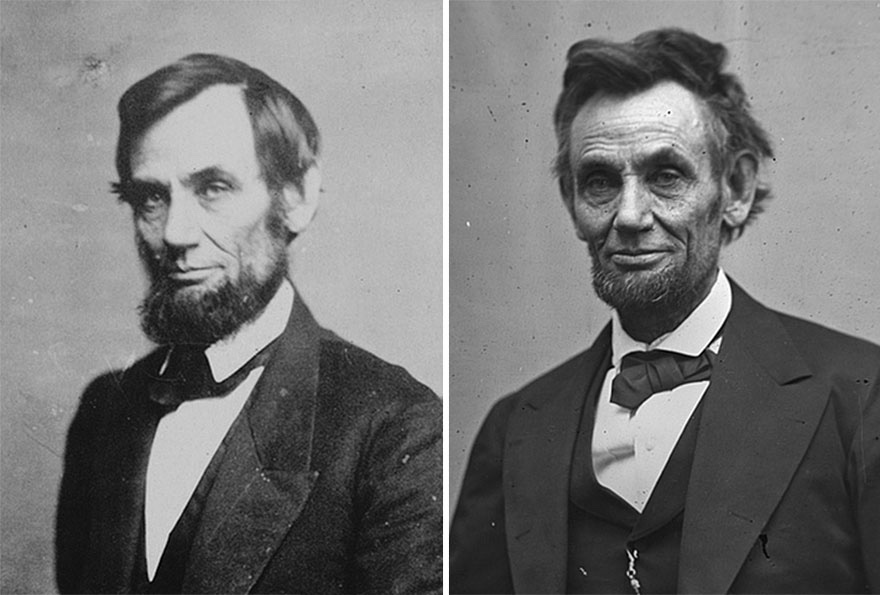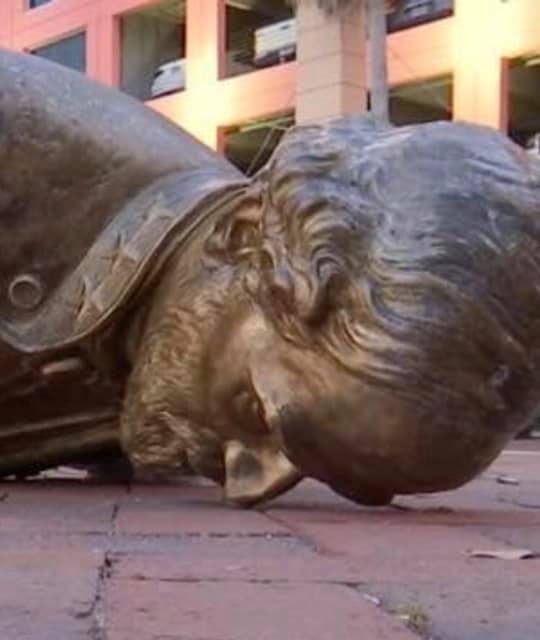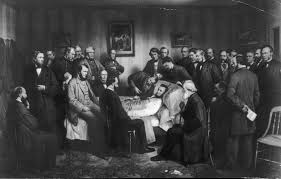The Civil War has always fascinated me. It is interesting how we vary in the thing that strike a chord within us. I have always been deeply awed by history. I find myself doing things that likely seem strange to others. Placing my hands on brick walls and worn floorboards. Slowly climbing stairs that creak and moan or have deep grooves where so many feet have tread. I feel vibrations coming from these inanimate objects that comfort me. I’ve been known to spend hours in historic cemetaries. I once set out on foot in Baltimore, headed for a historical marker I saw in the distance and came back 7 hours later, having followed history from place to place to place and oops I’m quite far away from my hotel! I am kept company by the spirits around me in these places. Dressed in the styles of their day, walking around and through me, unaware of the passage of time between us.
I began reading about the Civil War when I was around 10 years old. I was Harriett Tubman for Living History Day. I read from a piece of paper that told how many slaves I’d helped to escape. Harriett Tubman was a badass. I started reading on the perils of slavery first before my interests turned to Civil War fiction. North and South, Gone With The Wind. Anything that told the tragic tale of the Confederacy. It’s a funny thing about the Civil War. You don’t often hear about the Union side of things. Romance was Scarlett and Rhett in a deep kiss whilst Atlanta burned behind them. Tragedy was seeing beautiful and glamorous plantation homes reduced to burned-out shells, the once orderly land full of cotton or tobacco laid to waste and picked clean by starving soldiers.
I remember in 8th Grade History Class we were going over the Civil War. I had drawn a scoresheet for the Union and Confederate troops. At an angle, to one side I had written “Go South!” I had added “except for slavery” underneath. Lest anyone saw it and thought me insensitive.
The Confederacy. It endured the length of one Presidential term. Four years. 618,222 thousand Americans died in the uprising. Robert E. Lee surrendered in Appomattox on April 9th, 1865.
Abraham Lincoln lived in the newly re-united country for only six days time when John Wilkes Booth ended his life. Have you seen the pictures of Lincoln before and after the Civil War? The enormous stress he was under is painfully evident. I doubt he was sleeping easily during the 6 days he lived after the war, but it’s tragic he didn’t live to see his efforts realized.

Lincolns successor, Andrew Johnson, pardoned the Confederate generals.
155 years pass. We find ourselves in a wave of anti-Confederate sentiment. We see images of Confederate monuments and statues being vandalized, torn down or lifted off their pedestals by crane and removed from public sight.
Why is this happening now?
It’s a topic I have put a lot of thought into. Being a history lover with the Civil War at the center of my interest.
There were two events that brought out the stark contrast between these two schools of thought.
Five years ago (2015) there was a mass shooting at a historically black church in Charleston, South Carolina. Nine black parishoners holding a prayer group were gunned down by a young white man. The shooter, Dylann Roof, had posted a manifesto prior to the shooting expressing racial hatred and glorifying the Confederate South. He had posted numerous photos both burning the American flag and posing with the Confederate one. In this case, the Confederate flag and Confederate ideals were brought directly into the conversation by the killer himself.
The second incident made my blood run cold when I saw it. The 2017 white nationalist rally in Charlottesville, Virginia to protest the removal of two Confederate statues.

Many of us, perhaps for the first time, were confronted with the modern day Klu Klux Klan. Young, clean cut, regular looking white men, their faces twisted in anger, marching through the night with tiki torches. Prior to seeing this footage, I would have told you there were still small back-woods groups of white supremacists’.

I would have told you that there was racism in America, but it was a white person being rude or mean to a black person due to the color of their skin. I had friends in High School who were “not allowed” to date black men. This was really all I knew about racism. Until three years ago, in Charlottesville.
only wanting the Union to heal, pardoned the Confederate Generals. Stoically proclaiming “that these dead shall not have died in vain—that this nation, under God, shall have a new birth of freedom—and that government of the people, by the people, for the people, shall not perish from the earth.
I don’t want to make this blog post about my love for the Civil War, but I do feel it’s necessary to state in light of the commentary to follow. I take history very seriously. I take the destruction of history very seriously as well.
This is not a new issue in America. By any means. There is no time in our history that has been free of racial violence towards black citizens. At no time in our history have we been free of segregation and racial bias. Black people saying they are treated differently than their white counterparts is not new. Black protesting is not new. What IS new, right now? A sizeable number of white people are joining in.
Florida succeeded from the Union in 1861. It was the third state to do so. Florida was very important to the Confederacy. The state is a peninsula, making it safer than the landlocked states, which were vulnerable to the Union troops approaching by land. Florida was known as the Supplier to the Confederacy. Food for the troops. Able to reach the Eastern border of the Confederacy and also the southern states on the Gulf.
There were quite a few Civil War battles in Florida. There was only one in Ft. Myers. It was a one-day battle on Feb 20, 1865, A mere 2 months before Robert. E. Lee would surrender at Appomattox. This battle in Ft. Myers had a twist. The 2nd United States Colored Infantry was stationed here, in the legitimate Fort Myers. 250 black soldiers and former slaves held off a Confederate attack. The infantry found themselves at a disadvantage because they had been given old and obsolete weapons. Also, being black men, had they lost this battle they would have been executed by the Confederate soldiers on the spot. There was one fatality of this battle, one of the black soldiers within the fort.
It is noteworthy that this battle took place on the land that would later hold the bust of Robert E. Lee. There is no monument to the 2nd United States Colored Infantry, however.
What is the history of Robert E. Lee in Ft Myers? There is none. There are some reports he possibly traveled through in the years following the Civil War. There is no record of it. In a display of unity, Abraham Lincoln pardoned the Confederate generals following the war. In any other circumstances these men would have been charged with treason and war crimes and they would have been executed. Instead, they were at liberty to travel and were held in high esteem in the former Confederate states.


